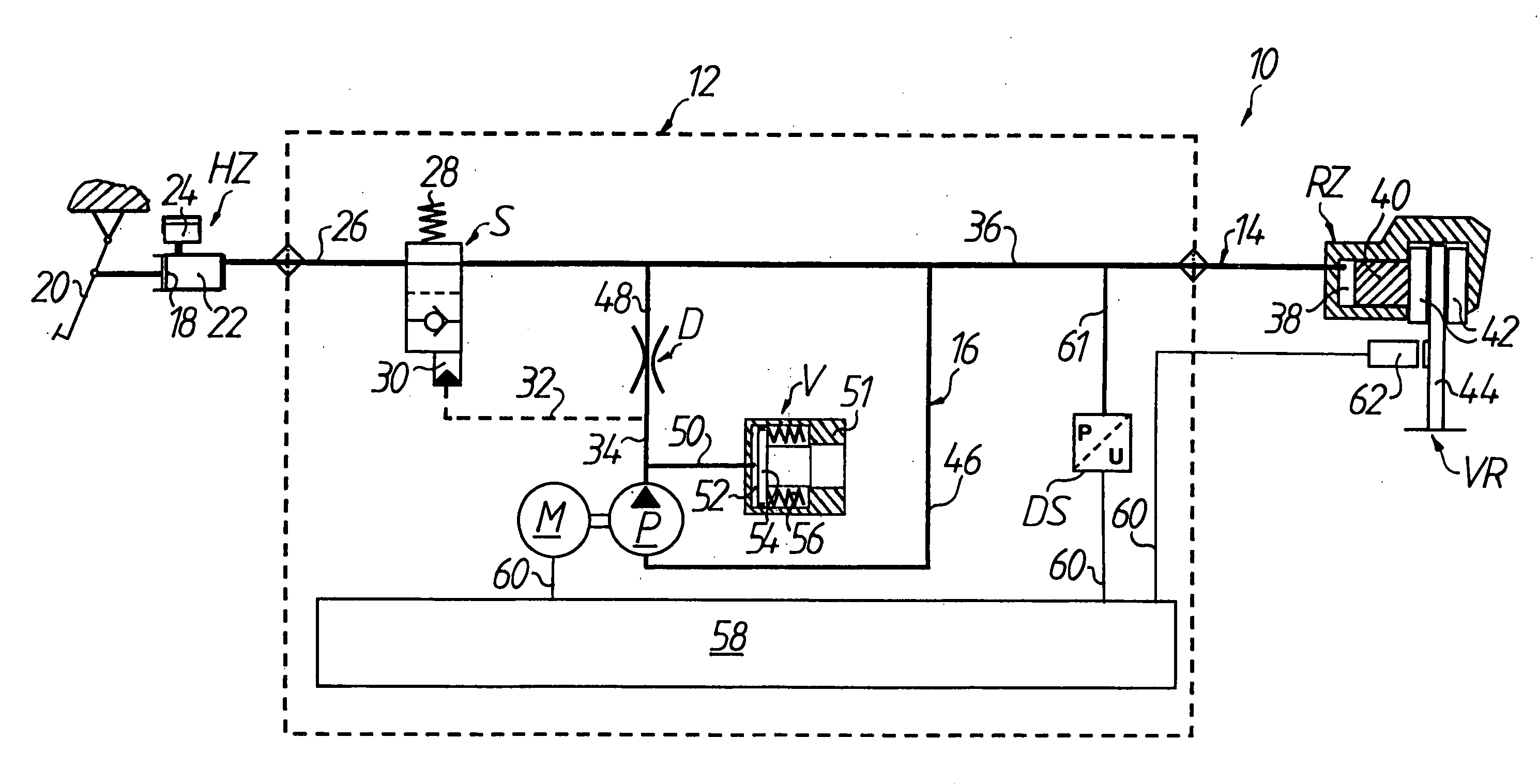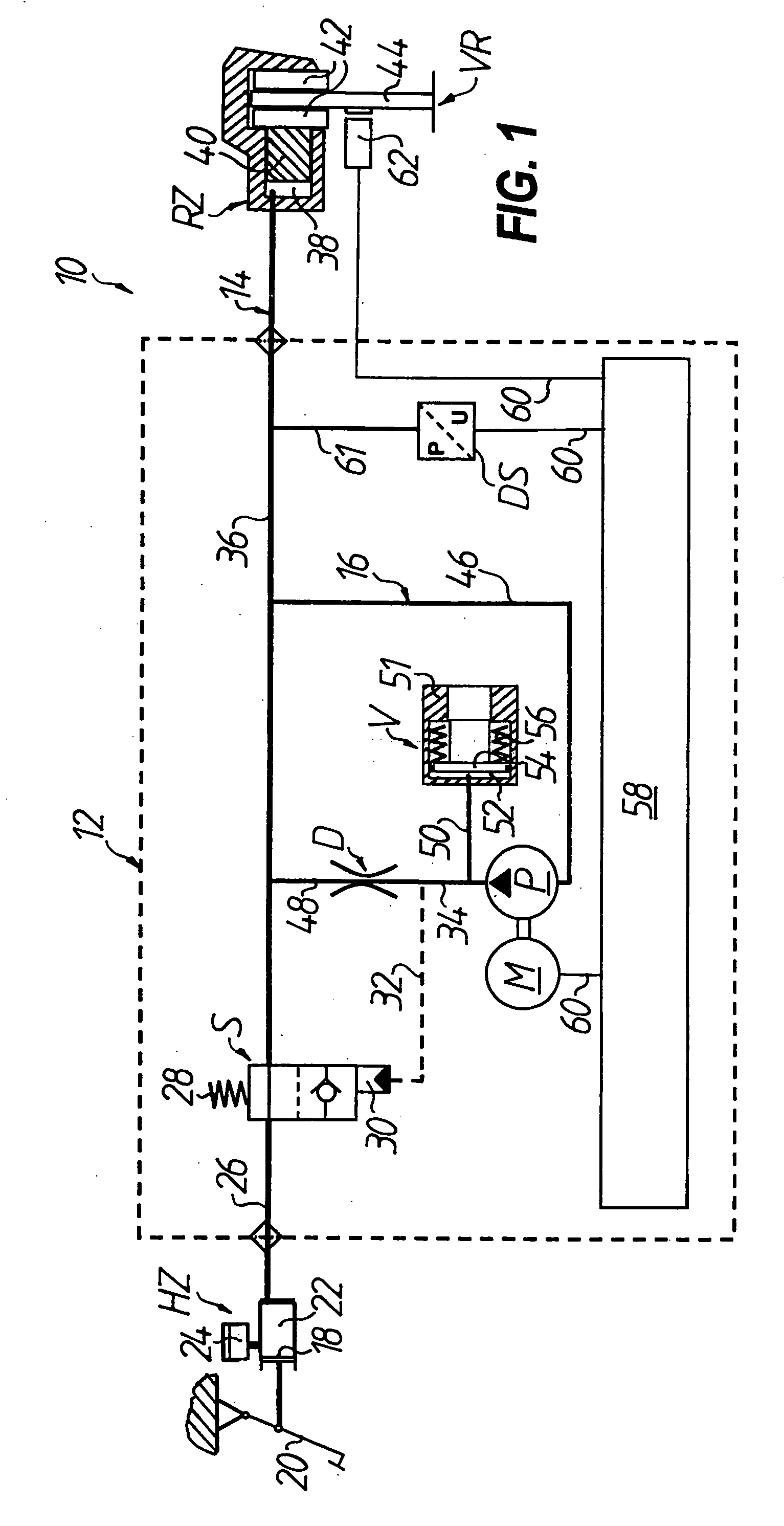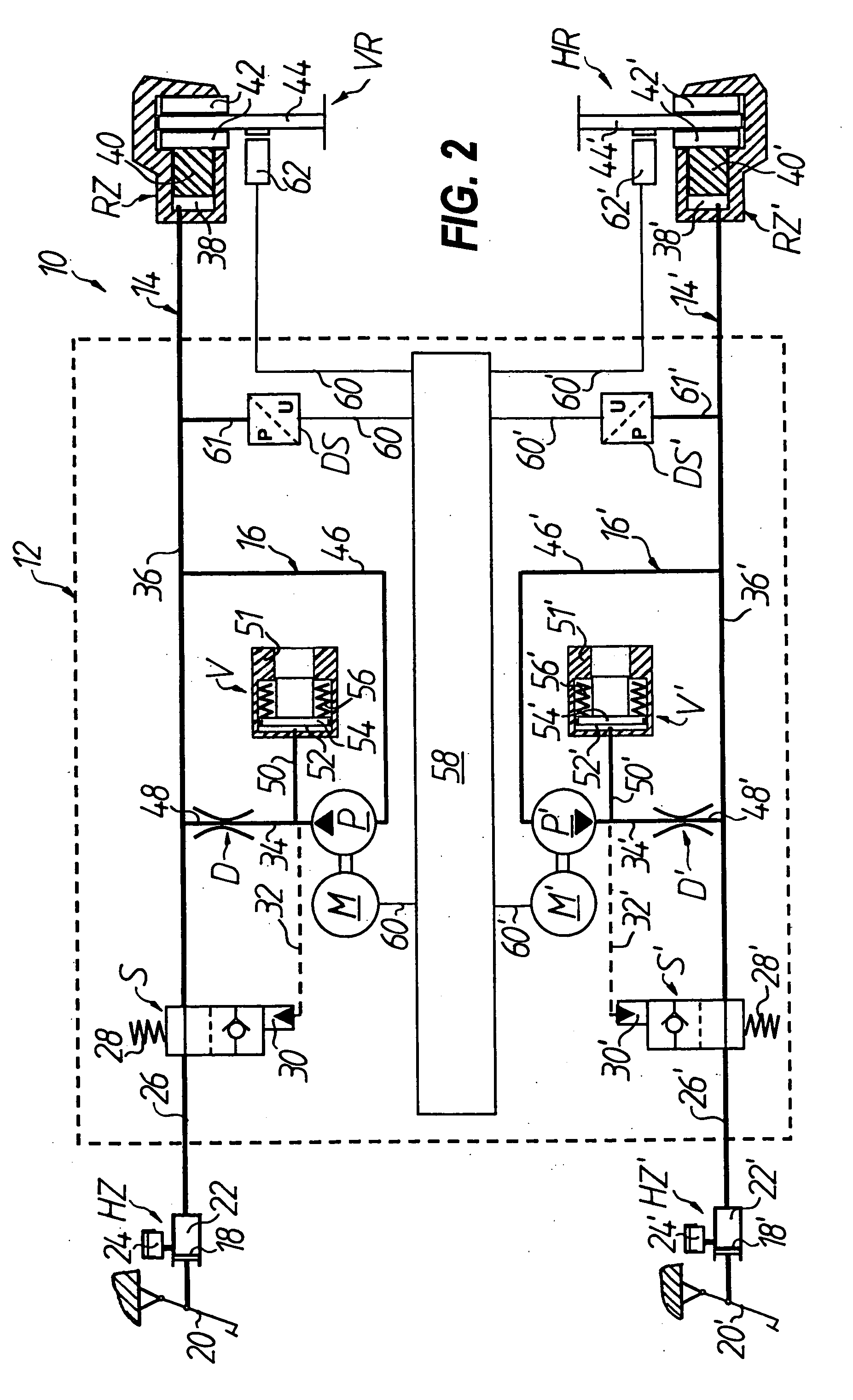Anti-lock hydraulic braking system, in particular for motorized two-wheel vehicles
a technology of anti-locking and hydraulic braking, which is applied in the direction of braking system, braking action transmission, transportation and packaging, etc., can solve the problems of preventing the use of such a braking system in particular in two-wheel vehicles with inexpensive materials, and the complexity of the device is required, so as to reduce the braking pressure, prevent a negative pressure, and improve the quality of control
- Summary
- Abstract
- Description
- Claims
- Application Information
AI Technical Summary
Benefits of technology
Problems solved by technology
Method used
Image
Examples
Embodiment Construction
OF EMBODIMENTS
[0024]In FIG. 1, an anti-lock hydraulic braking system for a motorized two-wheel vehicle is generally denoted by 10, of which only the part of the system which acts on the front wheel VR is shown. The braking system includes a main brake cylinder HZ and a wheel brake cylinder RZ and also a pressure modulator which is connected therebetween and is generally denoted by 12. Seen hydraulically, the part of the braking system 10 which acts on the front wheel VR can be divided into a wheel brake circuit 14, which includes the main brake cylinder HZ, the wheel brake cylinder RZ and a switching valve S connected therebetween, and an auxiliary pressure circuit 16 which is connected in parallel between the switching valve S and the wheel brake cylinder RZ on the wheel brake circuit 14. The auxiliary pressure circuit 16 generally includes a hydraulic pump P for producing a volume flow, a throttle device D which is arranged downstream of the hydraulic pump P, and a volume equaliza...
PUM
 Login to View More
Login to View More Abstract
Description
Claims
Application Information
 Login to View More
Login to View More - R&D
- Intellectual Property
- Life Sciences
- Materials
- Tech Scout
- Unparalleled Data Quality
- Higher Quality Content
- 60% Fewer Hallucinations
Browse by: Latest US Patents, China's latest patents, Technical Efficacy Thesaurus, Application Domain, Technology Topic, Popular Technical Reports.
© 2025 PatSnap. All rights reserved.Legal|Privacy policy|Modern Slavery Act Transparency Statement|Sitemap|About US| Contact US: help@patsnap.com



